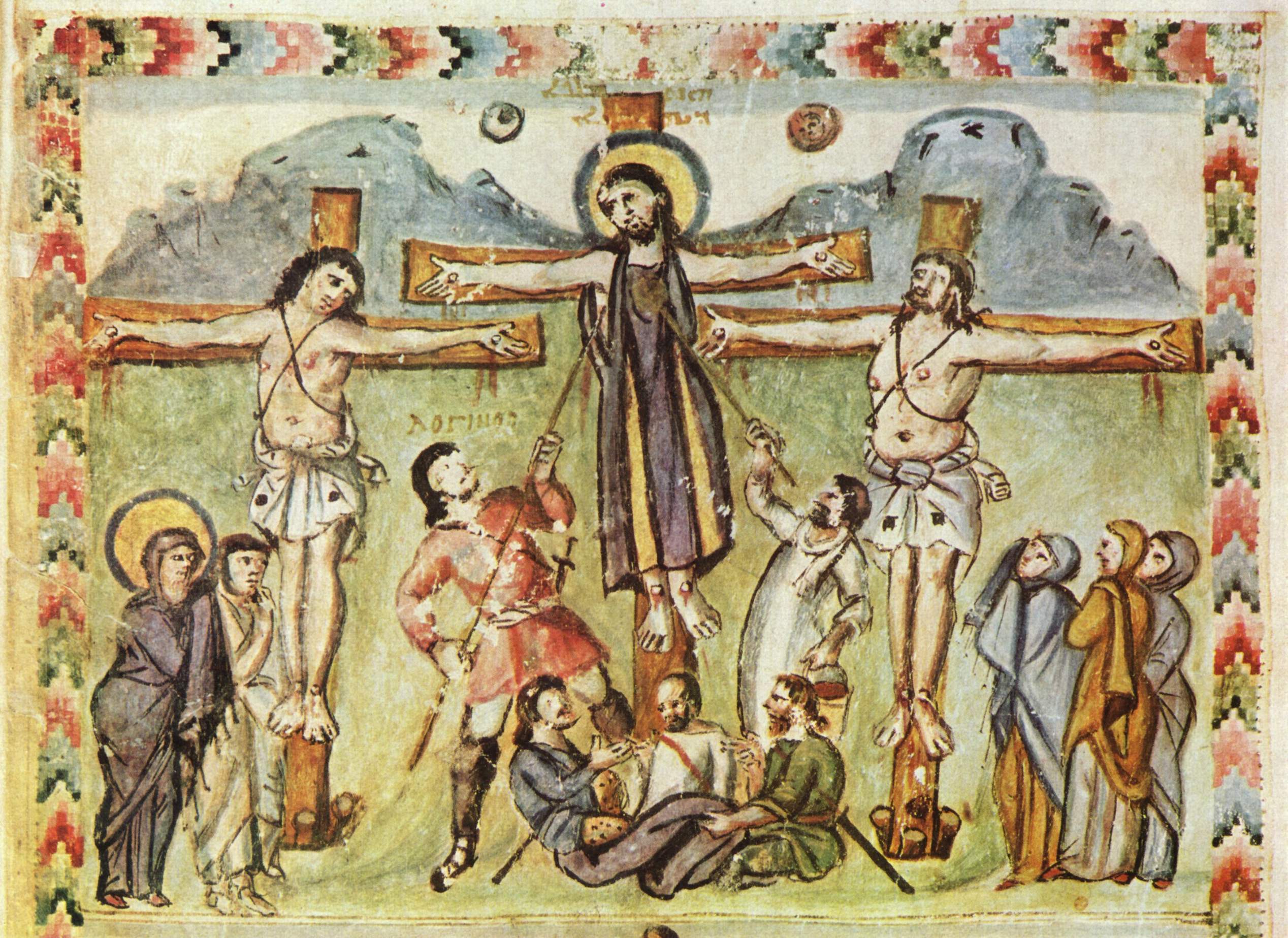Happy Easter Everyone.
While this information is known by many, when searching Google for anything it is important to have proper terms to avoid unrelated, possibly even offensive items.
I began with “Friday of Sorrows in illuminated manuscripts” because I did not know that phrase and was curious. I found nothing by Google. That’s rare, but it happens.
Moving on and changing topics I used Google and found numerous beautiful examples of “crucifixion in illuminated manuscripts.” (Of course, I found some extraneous items too.)
 |
| Crucifixion by Meister des Rabula-Evangeliums |
That netted me the earliest illuminated crucifixion. Intriguing because it is a long lasting first. It is in the Rabbula Gospels, a 6th-century Syriac Gospel Book and one of the finest Byzantine illuminated manuscripts.
 |
| British Library’s Arundel Psalter f. 116 v. |
Using the British Library‘s illuminated manuscripts’ advanced search and entered “crucifixion” in the contents square. I use the advanced search tool at least monthly. From that I found the English 14th century Arundel Psalter that includes a crucifixion miniature showing the nails being hammered in.
The Netherlands National Library has a similar Medieval Illuminated Manuscripts advanced search tool .
Besides Google and Wikipedia, the advance search tools at the British Library and the Netherlands National Library are my favorite illumination search tools.
 |
| British Library’s Harley 2855 f. 3v German, S. 15th C. |
I continued searching after finding the term Ecce Homo. Wikipedia says it is a standard illustration cycles’ section. The cycles also include “the
Passion and Life of Christ in art. It follows the Flagellation of Christ, the Crowning with thorns and the Mocking of Christ, the last two often being combined”. These common phrases give me even more ways to search.
Googling “Christ’s Passion Illuminated Manuscripts” I found much more. You can click and see the results.
So far, for a single source, I have not been able to top Sexy Codicology’s blog post about The Holy Week In Medieval Illuminated Manuscripts, April 22, 2014 In it I found Prayer Book of Cardinal Albrecht of Brandenburg by my favorite Simon Bening (Flemish, about 1483 – 1561). His beautiful creations are why my persona’s last name is Bening.
Finding your inspiration or information sometimes takes searching for terms so you know what to plug into Google. Be open to using new phrases, take different paths. You never know what exciting manuscript illumination or detail you’ll find. It’s surprising and interesting that Easter is not included in Holy Week.
Related Prior Post:
Finding Sexy Codicology
How to Google for Illuminated Manuscript Inspirations
One thought on “Searching for Easter Week in Illuminated Manuscripts”